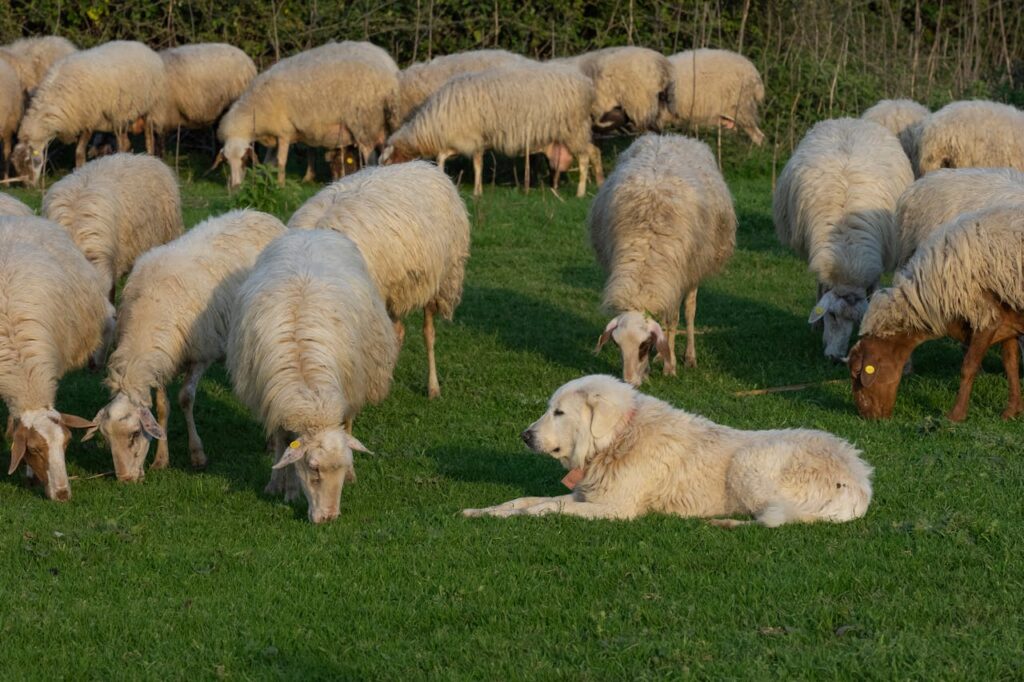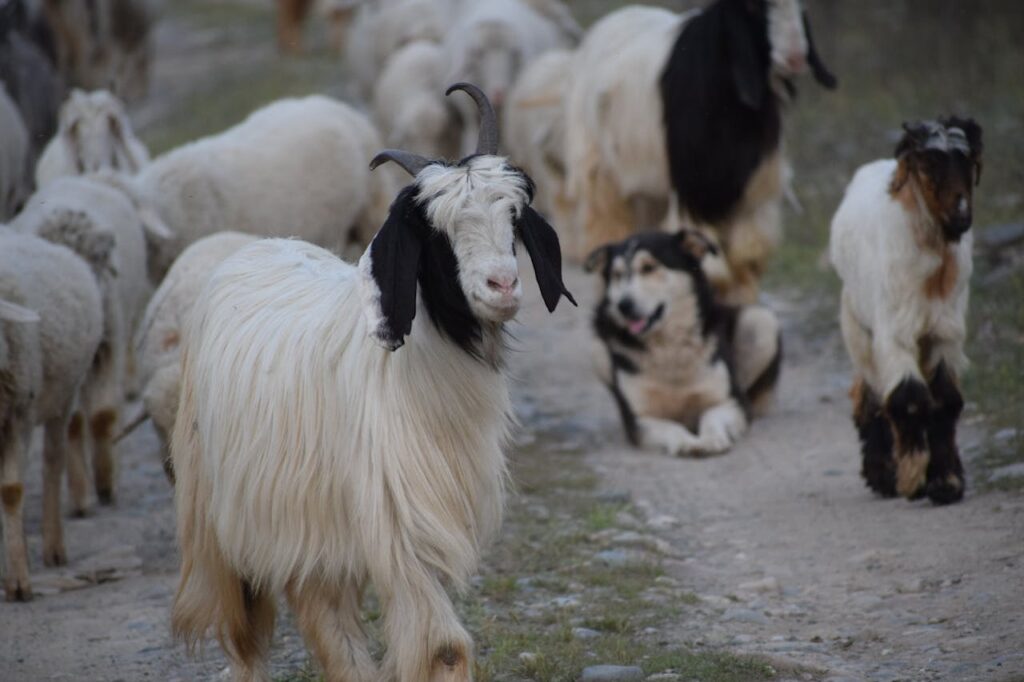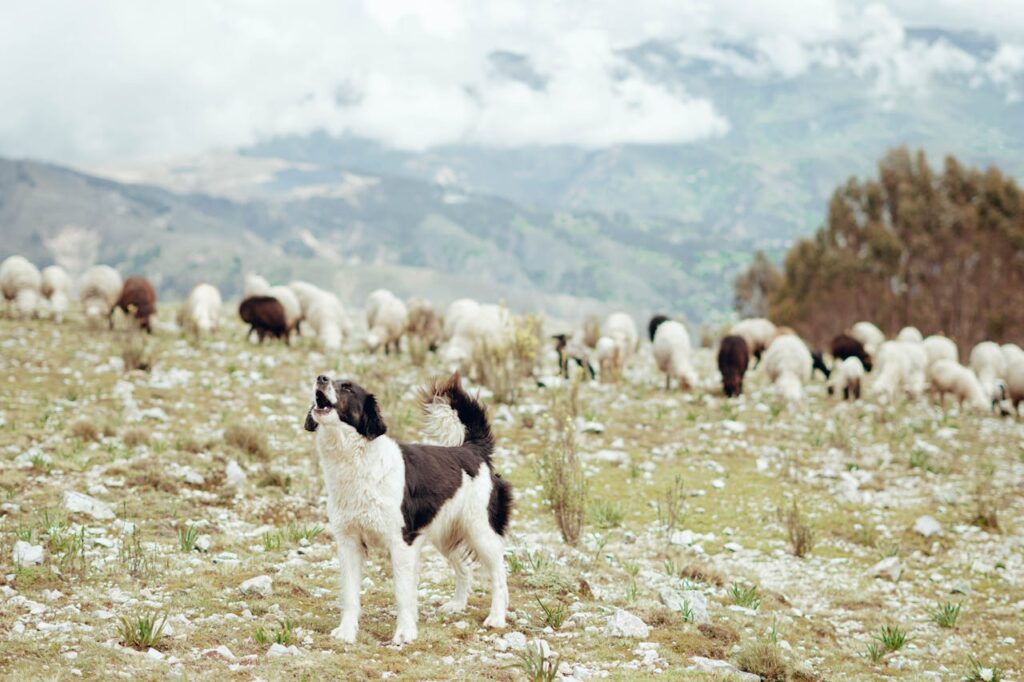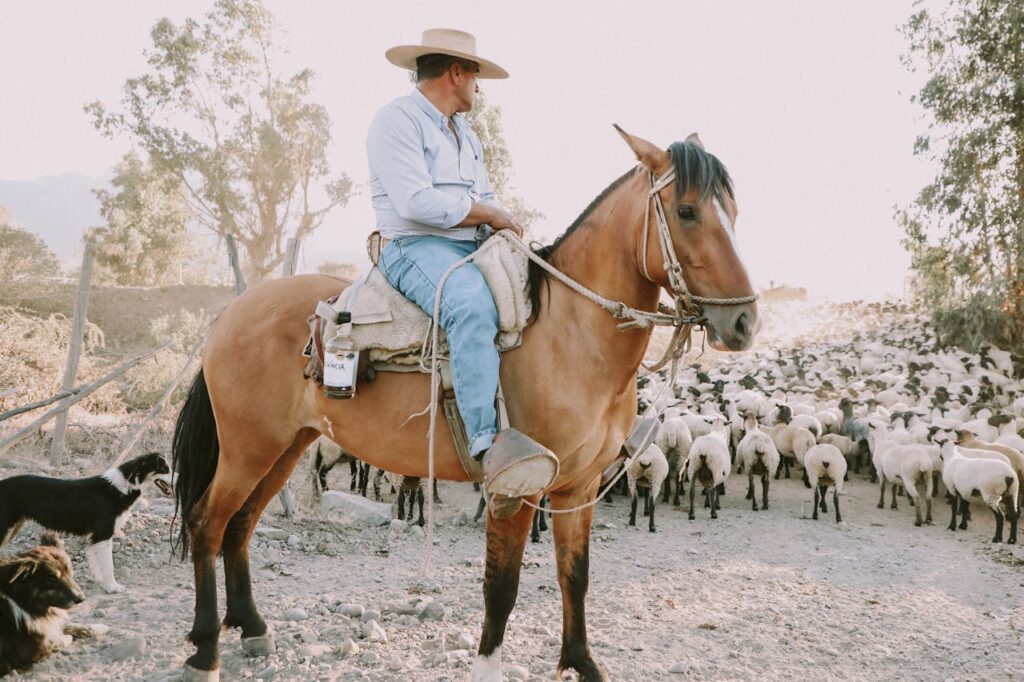Training your dog to herd is a rewarding and exciting process. Not only does it engage your dog’s natural instincts, but it also strengthens the bond between you and your furry friend.
Whether you’re a farmer, a homesteader, or just curious about tapping into your dog’s potential, learning how to train a dog to herd will take patience, consistency, and a good understanding of your dog’s behavior.
Let’s jump into the steps to turn your dog into a confident herder.
1. Start with Basic Commands
First things first: your dog needs a solid foundation in basic obedience. Commands like “sit,” “stay,” “come,” “lie down,” and “leave it” are essential.
These commands give you control over situations and ensure the safety of both your dog and the livestock.
Spend time practicing these commands in a variety of environments to make sure your dog listens, even when there are distractions.
As your dog masters the basics, start introducing herding-specific commands like:
- “Walk up”: Approach the herd calmly.
- “Come bye”: Move clockwise around the animals.
- “Away”: Move counter-clockwise around the animals.
Teaching these commands early will make the transition to herding much smoother.

2. Introduce Small, Docile Animals
Starting with smaller animals is the best way to build your dog’s confidence. Chickens, ducks, or sheep that are used to being herded are ideal for beginners.
Avoid exposing your dog to large, fast, or uncooperative animals at this stage. Intimidating livestock can discourage your dog and create unnecessary stress.
Begin with a small, manageable group of animals. Their calm behavior will help your dog learn the basics of herding without feeling overwhelmed.
As your dog gains experience, you can gradually introduce larger or more challenging livestock.
3. Familiarize Your Dog with the Herd
Now it’s time to let your dog get acquainted with the animals. Place the animals in a training pen and allow your dog to observe them from a safe distance.
Watch how your dog reacts. Does he seem calm and curious, or is he overly excited? Reward calm behavior with treats and praise to encourage the right mindset.
This step is all about building your dog’s comfort level. If you’re working with larger animals, take the same approach by keeping your dog on a leash and letting him observe the herd from a distance.
Patience is key here the more relaxed your dog feels, the easier the training process will be.

4. Teach Herding Commands
Once your dog feels comfortable around the animals, start practicing herding-specific commands.
Keep your dog on a leash to maintain control and guide him toward the herd while saying, “walk up.” Stop a few feet away from the animals and reward your dog for staying calm.
This simple exercise introduces your dog to the idea of approaching livestock in a controlled manner.
Next, practice moving your dog around the animals in circles. Use the commands “come bye” for clockwise movements and “away” for counter-clockwise movements. Continue rewarding your dog with treats and praise whenever he follows your instructions.
Over time, you can progress to practicing these commands off-leash in a secure area.
5. Transition to Larger Livestock
When your dog has mastered herding smaller animals, you can move on to larger livestock like goats or cows.
Start small to avoid overwhelming your dog. Begin with a small herd and use a long leash to give your dog room to move while maintaining control.
Guide your dog toward the herd using the “walk up” command. Let your dog take his time getting comfortable around the animals.
As he gains confidence, practice moving him around the herd using the directional commands “come bye” and “away.”
Gradually increase the distance between you and your dog, eventually transitioning to off-leash herding when your dog consistently responds to commands.
6. Add Advanced Techniques
To take your dog’s herding skills to the next level, teach advanced commands like:
- “Break” or “to me”: Signal your dog to stop herding and return to you.
- “Wait”: Instruct your dog to pause and hold his position.
- “Get back” or “get out”: Ask your dog to give the animals more space.
You can introduce these commands by practicing with a ball or toy before applying them in herding scenarios.
Additionally, consider whistle training to improve communication over long distances. Use a single whistle blow for “come bye” and two blows for “away,” pairing the sounds with verbal commands until your dog associates them.

7. Practice Patience and Consistency
Herding isn’t something your dog will master overnight. It requires patience and consistent practice.
Keep training sessions short, around 10–15 minutes, to prevent boredom or exhaustion. Celebrate small victories and remember that every dog learns at their own pace.
Avoid yelling or punishing your dog for mistakes, as this can damage their confidence and hinder progress.
Related Post: Are Dogs Allowed in Myrtle Beach
Common Challenges and How to Overcome Them
- Overexcitement: If your dog gets too excited around the animals, use commands like “lay down” to help him calm down. Take breaks if needed.
- Timid Behavior: For shy dogs, create a positive and encouraging environment. Reward every small success and avoid rushing the process.
- Uncooperative Livestock: Start with well-trained, calm animals to make the initial training sessions smoother. Over time, your dog will learn to handle more challenging livestock.
Additional Tips for Success
- Use positive reinforcement: Praise and treats work wonders for motivating your dog and reinforcing good behavior.
- Monitor livestock’s behavior: Keep an eye on the animals to ensure they aren’t stressed or aggressive.
- Stay safe: Always prioritize safety by keeping your dog on a leash during the early stages of training.
- Incorporate rest periods: Give your dog time to rest between sessions to prevent fatigue.
Why Training Your Dog to Herd Is Worth It
Training your dog to herd goes beyond just teaching commands. It’s an opportunity to nurture your dog’s instincts and create a fulfilling activity that benefits both of you.
Herding provides mental and physical stimulation for your dog, helping him stay healthy and engaged.
Plus, watching your dog confidently manage livestock is an incredibly rewarding experience.

Final Thoughts
Learning how to train a dog to herd requires dedication and patience, but the results are well worth the effort.
By starting with basic commands, introducing small animals, and gradually progressing to larger livestock, you’ll set your dog up for success.
Remember to be patient, use positive reinforcement, and celebrate every milestone along the way.
With time and practice, your dog will become a skilled and confident herder, ready to take on any challenge.


Pingback: Do Dogs Poop Facing North? Surprising Facts About This Behavior - Tech Promot